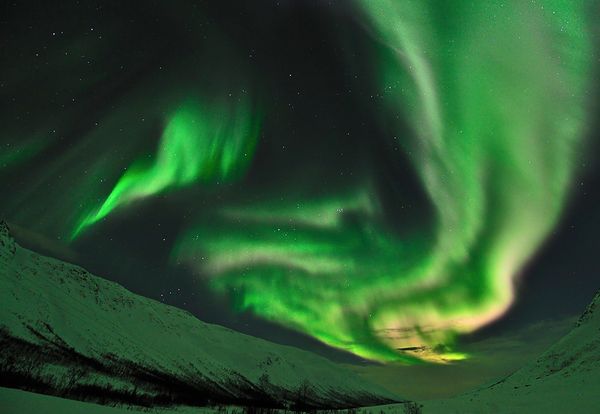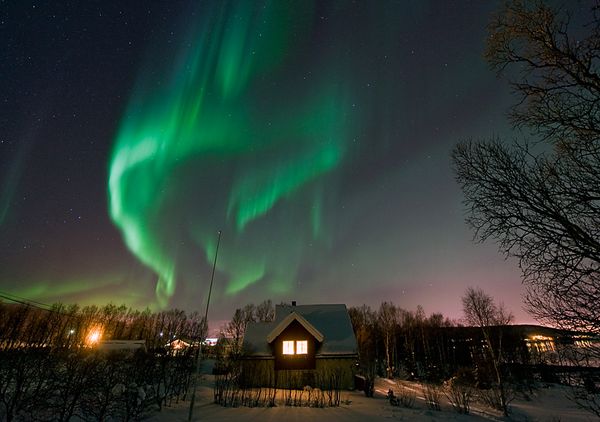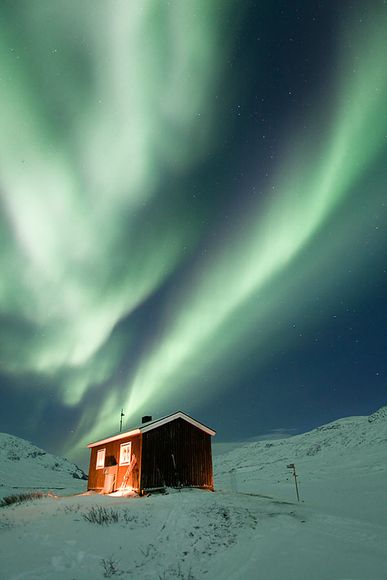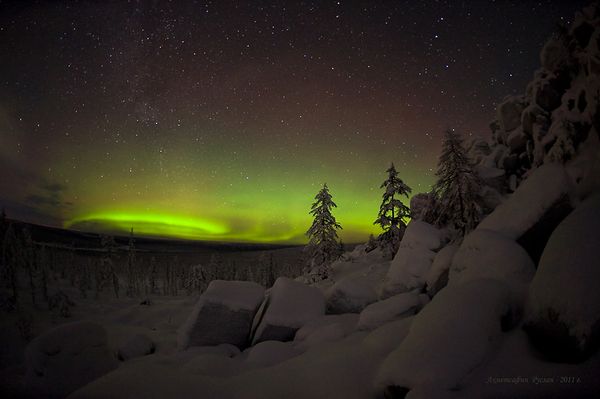|
|
转载自国家地理杂志官网,版权归国家地理杂志所有。
翻译是件痛苦的事情,大家将就用google在线翻译吧,理解即可。

New Year's Aurora
Photograph by Thilo Bubek
Part of the new year's first big display of northern lights, an aurora borealis appears to dip into the mountains near Tromsø in northern Norway on January 7.
The auroras, which continued into the second week of the year, were rooted in strong "gusts" of solar wind—actually charged particles—set in motion by sun activity in the first week.
Auroras are created when such charged particles flow along Earth's magnetic field lines. The particles hit the atmosphere at the Poles and excite air molecules, which release the extra energy as light.

Curtains for Kvaløya
Photograph by Fredrik Broms
A garland of northern lights hangs above the island of Kvaløya in northern Norway on January 8.
High auroral activity in the first weeks of the new year peaked on January 7 and 8 around the Arctic Circle. But high-latitude sky watchers were treated to plenty more in the following days. Near Tromsø, Norway, on January 12, auroras began at 6 p.m. and kept up the show for the next 12 hours.
During its peak the northern lights were so bright they could be seen from as far away as Northern Ireland, according to a report on spaceweather.com.

Leave a Light On
Photograph courtesy Peter Rosén
Northern lights sweep above a cabin in Abisko in northern Sweden on January 7. "The entire sky opened up like a beautiful inferno," photographer Peter Rosén told spaceweather.com. "Red, blue and green like a dancing queen on the sky."
The solar ejections that cause auroras can also create geomagnetic storms that can affect spacewalking astronauts, Earth-orbiting satellites, and even communications and power systems on the ground.

Alien Sunset
Photograph courtesy Ruslan Akhmetsafin
An aurora borealis gives the distant horizon an otherworldly appearance in Siberian Russia on January 8.
Auroras glow in different colors based on the types of atoms in the atmosphere and how high they are in the sky.
Humans see auroras mostly in shades of yellowish green. That's because the eye sees a light show created by oxygen atoms at lower altitudes, about 62 to 186 miles (100 to 300 kilometers) above the surface.
Blues and purples are created by lighter gases such as hydrogen and helium, while low-level nitrogen can add red fringes to the bottoms of green auroral curtains.

Kryptonite Haze
Photograph by Thilo Bubek
A streak of auroral light mimics the curve of an illuminated bridge near Sommarøya in northern Norway on January 7.
The glowing display of curtains, arcs, and bands in the sky is called aurora borealis, or northern lights, in the Northern Hemisphere and aurora australis, or southern lights, in the Southern Hemisphere. |
|